
Handlebars are perhaps the single most important point of contact on a mountain bike. However, it can be easy to overlook this crucial element and its impact on bike fit, steering accuracy, and comfort on the bike. Singletracks has tested dozens of mountain bike handlebars over the years, and in this guide we’ll share our recommendations for carbon and alloy mountain bike handlebars, plus gravel bike bars. We’ll also discuss the things to look for when picking a set of bars.
Mountain bike handlebars we recommend
- Best riser handlebar: Deity Highrise
- Best gravel handlebar for singletrack: Whisky Spano
- Best value carbon handlebar: PNW Loam
| Handlebar | Type | Price |
|---|---|---|
| ProTaper C25 | Mountain, carbon | $185 |
| Race Face Atlas | Mountain, alloy | $90 |
| PNW Loam | Mountain, carbon | $154 |
| Deity Highrise | Mountain riser, alloy | $84.99 |
| Hope 35mm Carbon | Mountain, carbon | $215 |
| Enve M7 | Mountain, carbon | $190 |
| OneUp Carbon E-bar | eMTB, carbon | $159.50 |
| Bontrager RSL | Mountain, integrated stem | $366.99 |
| PNW Coast | Gravel, alloy | $59 |
| Whisky Spano | Gravel, carbon | $280 |
| Spank Vibrocore | Gravel, alloy | $129.99 |

ProTaper C25 carbon handlebar
Product tester: Matt Miller
The C25 carbon handlebars are my favorite bars I’ve tested in a while. They’re comfortable, have yet to cause me any discomfort on a ride, and produce a notable difference compared to other carbon bars. The ProTaper C25 handlebars are 810mm and have a 25mm rise, 4° upsweep and 8° backsweep, are are available with either a 31.8mm or 35mm clamp diameter. Read a complete review of the ProTaper C25 carbon handlebar.
- Price: $185
- Buy from Worldwide Cyclery on eBay.


Race Face Atlas 35 handlebar
Product tester: Jeff Barber
Race Face is known for producing bombproof components, and they don’t get any more bombproof than the Atlas 35 aluminum alloy handlebar. These are wide bars at 820mm before cutting with a 35mm mid-rise designed with gravity riding in mind.
The Atlas feels great riding fast, chunky trails, even on an unforgiving hardtail. Some bars can feel particularly harsh on rear wheel hits that reverberate through the frame and all the way up to the grips, but not the Atlas. While larger diameter 35mm bars tend to get a bad rap for feeling overly stiff, the drawn and shaped 7075 alloy does a decent job damping the bad vibes. I think the wide, 820mm width also helps here, allowing the bar to flex just enough along its length. Read the complete Race Face Atlas 35 handlebar review.
- Price: $90
- Buy from REI.

PNW Loam handlebar
Product tester: Matt Miller
The PNW Loam carbon handlebars are tuned for both stiffness and compliance and have an attractive low weight (222g) and price tag. The bars are 800mm wide and buyers can choose from 25mm or 38mm of rise for more aggressive riding and/or a better fit. The Loams have a “just right” tune to them and I don’t expect to have any complaints about them in the future. Read a full review of the PNW Loam handlebar.
- Price: $154
- Buy from PNW Components.

Deity Highside handlebar
Product tester: Jeff Barber
The Deity Highside bars deliver a good blend of stiffness and comfort for an excellent ride feel, and I’m a fan of the straightforward, bold look. Out of the box these aluminum handlebars are 800mm wide, cutable down to 750mm. The 50mm of rise is aggressive, and there’s even an 80mm rise version for extreme riders with extreme needs. We tested the 35mm diameter clamp bar; a 31.8mm is available to fit slopestyle and DJ bikes. Even though it’s a big, alloy bar, it weighs a reasonable 365g uncut. Read the complete Deity Highside handlebar review.
- Price: $84.99
- Buy from JensonUSA.

Hope 35mm carbon handlebar
Product tester: Matt Miller
The UK-made Hope 35mm carbon handlebars are a nice upgrade for people who want a high quality set of bars under their mitts. The specs are moderate which makes them a good fit for most riders, and the bars balance compliance and stiffness well. Hope carbon handlebars are 800mm wide with 20mm rise, 5° of upsweep, 7° of backsweep, and a weight of 225g. If you’re not sold on a 35mm diameter for your bars or want to stick with your current stem, this one is also available in 31.8mm. Read the full review of the Hope 35mm carbon handlebars.
- Price: $215
- Buy from Amazon.

Enve M7 handlebar
Product tester: Matt Miller
Enve M7 handlebars are both light, stiff, responsive, and look great. The vibration damping was noticeable and improved ride quality without a doubt. After long downhill runs, my hands were quite a bit happier. The Enve M7 handlebars are 800mm wide with a 35mm clamp diameter, and are offered in 10mm, 25mm, and 40mm rise versions. Read our complete review of the Enve M7 carbon handlebars.
- Price: $190
- Buy from Enve.


OneUp Carbon E-Bar
While we haven’t fully tested the OneUp Carbon E-bar, it’s very similar to the OneUp 35mm carbon bar Gerow tested. These bars feature the same ovalized profile to improve vibration damping but add ports for e-bike control wires for a neat cockpit. Stock, the OneUp Carbon E-Bar is 800mm wide and can be cut down as narrow as 740mm. It has 8° of back sweep and 5° of upsweep with a 35mm rise.
- Price: $159.50
- Buy from REI.

Bontrager RSL integrated handlebar and stem
Product tester: Gerow
The carbon fiber Bontrager RSL integrated handlebar melds bar and stem for a streamlined look. Of the integrated bars we’ve tested, the Bontrager RSL is one of the more practical. The bars have 27.5mm of rise, 9° of backsweep and 2° of upsweep, which is quite flat. With few adjustments available, buyers may find it’s a good way to cut weight but only if the geometry looks similar to a handlebar you already like. These are unusual bars so before you buy, be sure to read the full Bontrager RSL review.
- Price: $366.99
- Buy from Trek.
Handlebars for gravel bikes
Gravel bike handlebars can make a big difference in how a bike handles, and perhaps more importantly, how it feels. With multiple hand positions to choose from, gravel bars are generally more flared outward than road bike drop bars.


Spank Flare 25 Vibrocore gravel handlebars
Product tester: Matt Miller
The Spank Flare 25 Vibrocore drop bars have been a wise move for my gravel bike. They are light, do a great job at mitigating bumps and vibration, and in turn make it easier to pilot a rigid drop bar bike over harsh terrain. The Flare 25s take the pain away where they can, and maximize control, making it even easier to do silly things on gravel bikes. With 25° flare and 110mm of drop, the 440mm bars are on the wide side. Read the full Spank Flare 25 Vibrocore review.
- Price: $129.99
- Buy from JensonUSA.

Whisky Spano gravel handlebar
Product tester: Chris Hrekno
If hilly, rough rides are more your thing than fighting for high average speeds against a stiff wind, the Whisky Spano bar could be an exciting upgrade, with advantages in weight, comfort, and fit compared to the basic alloy drop bars that tend to come stock on even the nicer gravel bikes. At $280 MSRP it isn’t cheap, but for the right rider it definitely transforms a nice bike into an even nicer one. Read more in our Whisky Spano handlebar review.
- Price: $280
- Buy from whiskyparts.co

PNW Coast gravel handlebar
Product tester: Sam James
The PNW Coast handlebars and stem are a nice addition to a gravel bike to really personalize it and get the fit dialed. The handlebars are fairly extreme as far as typical drop bars go while still being comfortable to ride. Any mountain biker that is making the move over to a drop bar bike for the first time will likely find these to be a little more comfortable and normal feeling than a more conventional or narrower drop handlebar, as will those looking for a more relaxed feeling geared more toward long days and big descents.
- Price: $59
- Buy from PNW.
Mountain bike handlebar buyers guide
The first thing to realize is that mountain bike handlebar size and shape can be a personal choice. What might work for one person might not work for another. And as a part of the bike fit equation, what makes for a good comfortable fit on one frame might not work as well on a different bike since the geometry and sizing will be different. The main thing to understand is that it might take a bit of experimentation with your setup to find the ideal sweet spot.
Mountain Bike Handlebar Geometry
No, this has nothing to do with your favorite watering hole, though geometry can get complicated after a visit to your local hostelry. When it comes to handlebar geometry, there are two main numbers to consider: rise and sweep.
Handlebar Rise

Rise is essentially the height differential between the center of the bar, where it attaches to the stem, and the center of the 22.2mm diameter just after the taper and transitional bend. Mountain bike handlebars are typically configured with zero rise (flat bars) all the way up to 100mm (roughly 4 inches). Bars with 100mm rise aren’t very common anymore, so these days, “high-rise” bars are usually in the 40-50mm range (about 1.5-2 inches). Note that because all bars transition between the clamp and grip areas differently, it’s not possible to compare rises directly between bars from different manufacturers, or even with different designs. BikeYoke has proposed a new bar measure called stack that measures the height between the clamp area and the end of the bars.
Choosing the right amount of rise usually comes down to rider position on the bike. If the cockpit feels too low (for a taller rider, for example), a riser bar can get grips up into a more comfortable position. A riser bar will naturally have a bit more flex than a straight bar, assuming both bars are made of the same material and have identical diameters and widths. Read more about the pros and cons of riser bars.
Flat bars tend to be found on XC-oriented bikes while riser bars are used on more gravity-oriented setups. Since gravity bikes are optimized for riding downhill, a riser bar keeps the rider’s head and torso slightly higher on the bike for better control on the descents. Finally, some riders just prefer the look of one style over the other, so again personal preference plays a big part.
MTB handlebar sweep
After the rise, the next thing we need to think about is bar sweep. There are two measures of sweep: upsweep and backsweep.

Upsweep
Upsweep is the vertical angle of the bars at the grip. Upsweep does affect the overall rise of the bars, and is a separate measurement that affects rider comfort more than anything else. Most bars, if they list an upsweep measurement at all, will fall between 4° and 6°. This tends to provide a good, neutral wrist angle for riders.
Backsweep
Backsweep refers to the angle at which the bars swoop toward the back of the bike. This angle can range from 0° for a completely straight bar to 45° for a specialty bar like the Jones H-Bar. Again, sweep comes down to rider comfort and preference ahead of any other considerations like performance.
Handlebar diameter

Thankfully, mountain bike bars come in just one diameter at the grip: 22.2mm. This means grips are interchangeable with any bar on the market. When it comes to the stem clamp, that is a different story. The most common diameter is still 31.8mm, but older bars can be 25.4mm.
More recently an oversize 35mm standard was introduced by Easton that promises even greater strength and stiffness. With a larger clamp area, the bars tend to be stronger and stiffer. Larger clamp diameters also provide increased surface area for the stem connection, resulting in lower clamping pressure requirements, which is a good thing for carbon bars.
However some riders prefer the flex and lower weight that is associated with 31.8mm bars. The comparative increased strength and lack of flex of the 35mm clamp diameter bars can sometimes lead to a harsher ride feel than the narrower diameter bars.
Bottom line: if you’re upgrading your bars but keeping your stem, make sure the new bars will fit your stem clamp diameter. If buying both, ensure they will play nicely together.
Handlebar Width
For the past several years mountain bike handlebars have been trending wider. The wider, the better.
Related: How Wide are Your Mountain Bike Handlebars?
Now this is actually true for most modern riders, as wider bars slow down steering input for added control, especially when paired with a short stem. The longer a lever, the easier it is to move a weight, and since handlebars are a lever, the same rules apply.
Wider handlebars can even make breathing easier on the climbs. (Think about taking a deep breath with arms wide vs. arms crossed in front of your chest.) Now the crucial thing is to have a bar that is wide but not too wide. A handlebar that is too wide will stretch a rider out on the bike, ultimately limiting the range of potential motion on the bike. A bar that is too narrow has the opposite effect; while it increases the rider’s range of movement, it does make steering heavier and less stable feeling.
Beyond control considerations, wider bars can make navigating dense forest trails more difficult. But also keep comfort in mind. If you have short arms, you may not want the widest bars available, even if you are a super aggressive gravity rider.
These days, mountain bike bars are available in widths ranging from less than 600mm all the way up to 840mm or more. When shopping for mountain bike handlebars, it is important to note the width of the bars but keep in mind that you can always cut the bars down. Unfortunately you can’t safely add width to a set that are too narrow to begin with.
Cross-country riders will usually prefer narrower bars compared to trail and downhill riders, though it’s a good idea to experiment to find the right handlebar width.
Mountain bike handlebar materials
Now bar material is conventionally thought of as a binary question: you either run aluminum alloy, because you’re not rich or you don’t trust carbon; or, you run carbon, knowing those fears of a bar failing are unfounded and you like a bit of black glossy bling. But these are not the only options available on the market. Titanium and steel bars are also on offer for the discerning and offbeat rider.
Aluminum bars are generally the least expensive but are heavy. Titanium bars can be more expensive than carbon, and are generally heavier than carbon as well.
Titanium offers the least “harsh” ride feel in terms of impact and vibration, with carbon bars providing some forgiveness as well, and aluminum bars being the stiffest and harshest. Steel has some natural spring to it and offers a feel that some riders prefer.
Each of these four materials offer various and differing amounts of these key characteristics:
- Strength
- Flex
- Weight
- Vibration damping
In addition to these characteristics, there is also fatigue considerations, a specification seldom listed for a bar. But the number of hours of expected use is something to consider.

Some aggressive riders shy away from carbon bars, thinking they’re not as strong as aluminum. The fact is, carbon bars are often as strong, if not stronger than their aluminum counterparts. But aluminum fails in a much more predictable manner (bending or yielding), which is significantly less dramatic than a carbon bar snapping in combat.
The crucial factor for all bars is to ensure they are correctly installed with the proper torque, which will help prevent a catastrophic failure. It is also vital to inspect and perhaps replace any bar that has taken a mighty pounding in a bad crash. If in any doubt, see you local bike shop mechanic and get them to inspect or fit any new bars for you.
MTB and gravel handlebar shapes
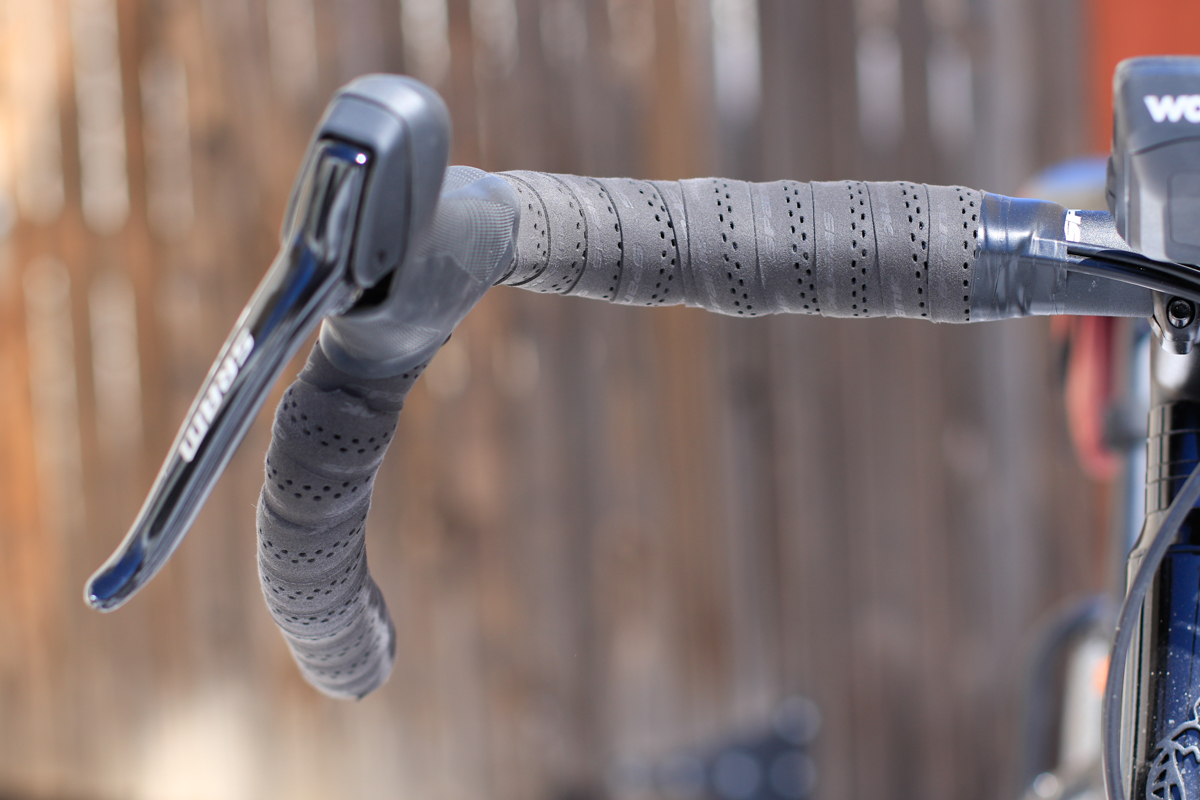
Most mountain bikes utilize a standard straight bar, but these days, mountain bikers are experimenting with other shapes like the Jones H-Bar and road-style drop bars. Many of these choices are based on extreme use cases like bikepacking and ultra-endurance riding where riders want to utilize multiple hand positions throughout the ride to avoid fatigue. In general, these types of bars trade comfort over trail handling












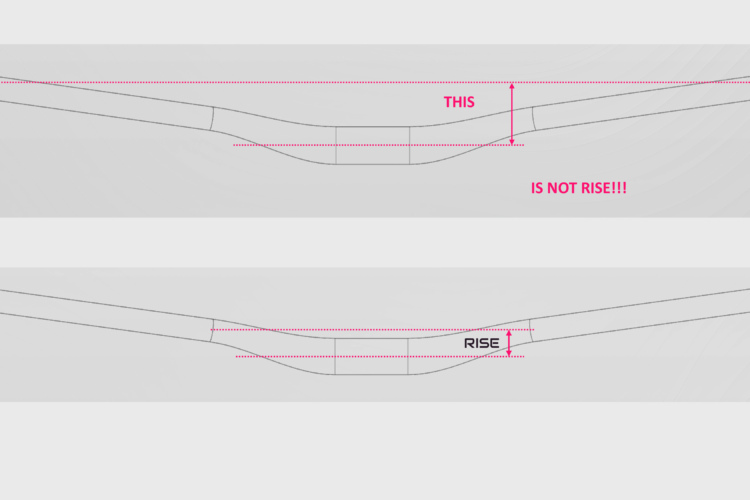
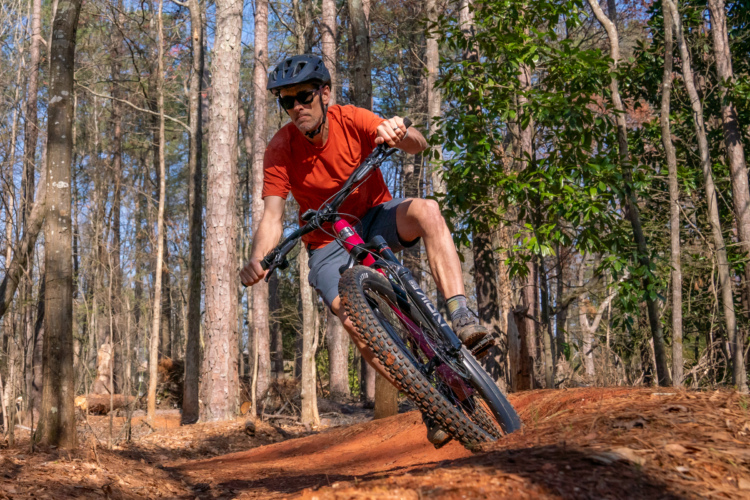


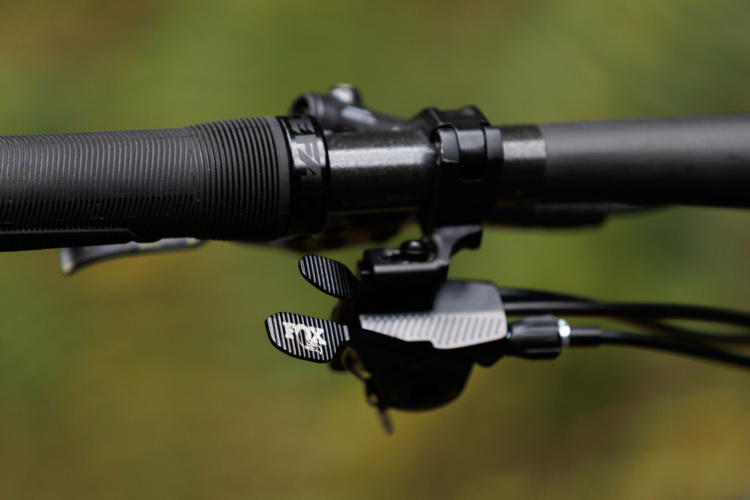


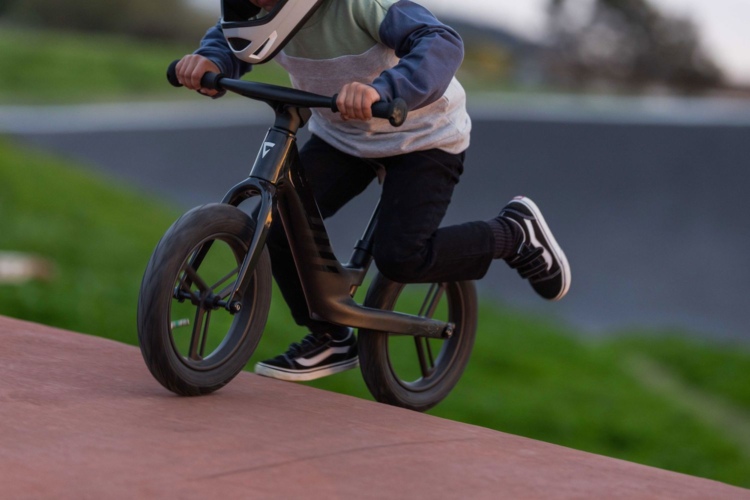

3 Comments
Feb 16, 2016
Feb 17, 2016
Feb 16, 2016